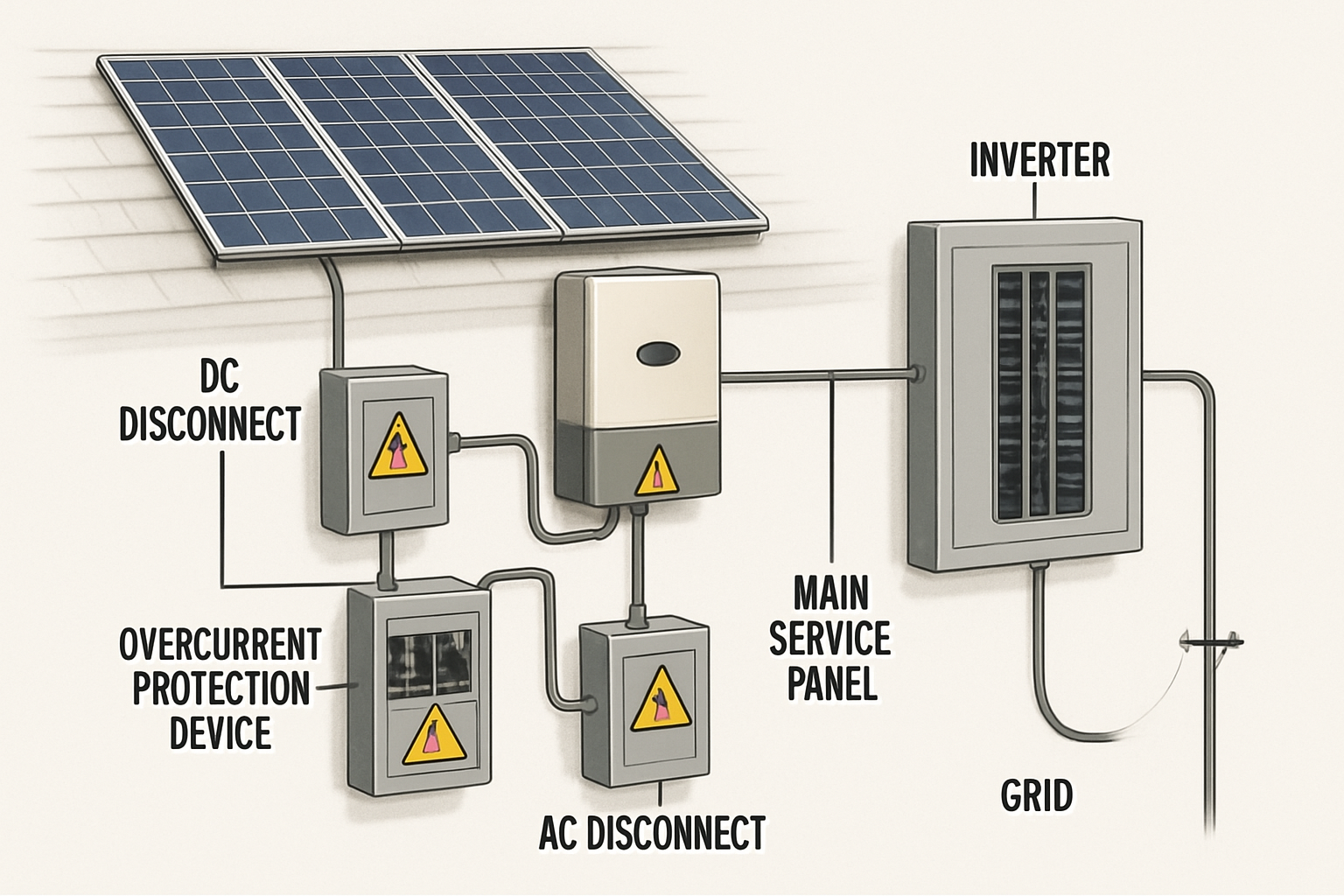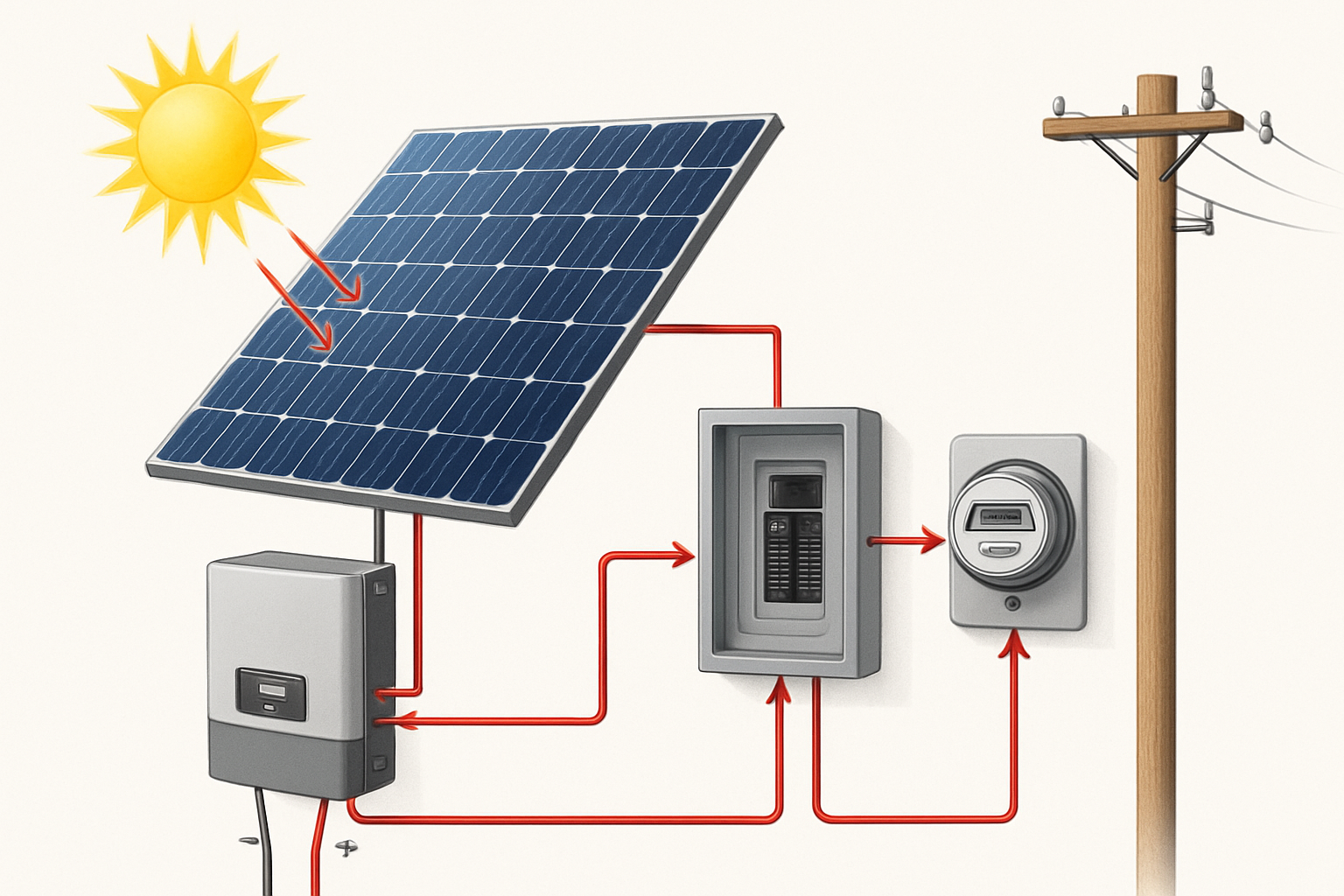Solar energy offers a powerful path to energy independence, transforming how homes and businesses generate electricity. As more individuals and organizations adopt solar photovoltaic (PV) systems, ensuring a reliable and efficient installation becomes paramount. The wiring, often considered a secondary detail, is actually the critical backbone of any solar PV system. Mistakes in this area can lead to reduced performance, significant safety hazards, or even complete system failure. This article will highlight seven common wiring errors encountered in new solar installations, helping you avoid pitfalls and secure a robust, long-lasting energy future.

Understanding Solar Wiring Fundamentals
Proper wiring is fundamental for efficiently converting sunlight into usable electricity. A solar PV system typically involves two main types of electrical current: Direct Current (DC) and Alternating Current (AC). Understanding their distinct characteristics and requirements is the first step toward a flawless installation.
DC Wiring Basics: From Panels to Inverter
Solar panels produce Direct Current (DC) electricity. This DC power travels from individual solar modules, often connected in series to form strings, to a solar inverter. The voltage and current levels in DC circuits can be substantial, requiring specific cable types and connectors designed for outdoor use and high-voltage applications. For example, a typical residential solar array might operate at DC voltages reaching several hundred volts, carrying significant current. The International Energy Agency (IEA) highlights that photovoltaic systems directly convert light into electricity, with inverters then transforming this DC into AC for most household and grid uses.
AC Wiring Basics: From Inverter to Grid or Load
The inverter's primary role is to convert the DC electricity from the panels into Alternating Current (AC). This AC power is precisely what your home appliances use and what the electrical grid accepts. From the inverter, AC wiring routes the electricity to your home's main electrical panel or directly to the utility grid. This part of the system must strictly comply with local electrical codes and utility requirements to ensure safe and seamless integration.
Importance of Proper Sizing and Protection
Correct wire sizing is crucial for preventing overheating and minimizing voltage drop, which ensures maximum power delivery from your solar array. Protection devices, such as fuses and circuit breakers, are equally vital. They shield the entire system from overcurrents and short circuits, preventing damage to expensive components and mitigating fire risks. These components, along with inverters, transformers, and monitoring equipment, are all considered part of the "balance of system" (BOS) for a PV installation, as detailed in IEA's Solar Energy Perspectives report.
| Characteristic | DC Wiring | AC Wiring |
|---|---|---|
| Source | Solar Panels | Inverter Output |
| Destination | Inverter Input | Home Electrical Panel / Grid |
| Voltage Range (Residential) | ~100V - 600V+ | ~120V - 240V (Single Phase) |
| Current Type | Direct Current | Alternating Current |
| Cable Requirements | UV-resistant, high-temperature rated, specific PV connectors | Standard electrical cables, appropriate gauge for load |
| Primary Concerns | Arc faults, voltage drop, connector integrity | Overcurrent, grounding, utility interconnection |
Common DC Wiring Mistakes
DC wiring errors are among the most frequent issues in solar installations and can significantly impact system efficiency, safety, and longevity.
Incorrect String Sizing and Voltage Mismatches
Connecting too many or too few panels in a series string can lead to voltages outside the inverter's optimal operating range. If a string's voltage is too low, the inverter may not activate or operate inefficiently, resulting in lost power. Conversely, excessive voltage can overload and permanently damage the inverter, a costly component. For example, an inverter specified for a maximum DC input of 500V might be damaged if a string designed for cold weather (where panel voltage increases) pushes the voltage to 550V. Careful design, considering temperature coefficients and inverter specifications, is essential to match the array's output to the inverter's capabilities.
Poor Cable Management and Protection
DC cables, especially those on the rooftop, are constantly exposed to harsh weather, intense UV radiation, and potential physical abrasion. Neglecting proper cable management can lead to rapid insulation breakdown, short circuits, and even fire hazards. Cables should always be secured using appropriate clips or ties, routed away from sharp edges, and protected within UV-resistant conduits or raceways where necessary. This attention to detail ensures the integrity of the wiring over decades of operation.
Improper Connector Usage and Crimping
Using incompatible connectors (e.g., mixing different brands) or poorly crimped connections creates high resistance points. These "hot spots" can lead to significant power loss, reduced system efficiency, and pose a severe fire risk due to excessive heat generation. Always use connectors specifically designed for solar PV applications, ensuring they are compatible with your cables and other components. Employing proper crimping tools and techniques, often requiring specialized training, is paramount for creating secure, low-resistance connections vital for long-term reliability and safety.
Common AC Wiring Mistakes
While AC wiring is more familiar to many electricians, solar-specific considerations and common oversights can still lead to problems.
Undersized AC Conductors
Similar to DC wiring, undersized AC conductors cause voltage drops and heat buildup, which reduces the amount of usable power reaching your home or the grid. This issue becomes more pronounced with longer cable runs or higher power outputs from the inverter. For instance, a long run of undersized wire from a 7kW inverter could lead to a 2-3% power loss daily, accumulating significantly over a year. Consulting national and local electrical codes, along with inverter specifications, for appropriate wire gauges is critical to ensure efficient power transfer.
Incorrect Grounding and Bonding
Proper grounding and bonding are fundamental for safety, protecting against electrical shocks, equipment damage, and lightning strikes. Errors in grounding can render critical safety devices ineffective, leaving the system and occupants vulnerable. All metallic components of the solar array, mounting structure, and electrical system must be correctly bonded and grounded according to national and local electrical codes. This includes ensuring continuity across all metal parts and a robust connection to the earth ground.
Inverter Connection Errors
Connecting the inverter incorrectly to the main service panel can lead to a range of issues, from the system simply not operating to creating grid instability. This includes incorrect phase connections in three-phase systems, improper breaker sizing that does not match the inverter's output, or failure to install required disconnects. Innovations like the ConnectDER device, funded by the SunShot Initiative, offer solutions to simplify this connection by allowing direct attachment between the electric meter and meter socket, potentially bypassing complex internal wiring upgrades or service panel modifications.
Overlooking Safety and Compliance
Safety and compliance are non-negotiable aspects of any solar installation. Overlooking these can have severe consequences.
Neglecting Overcurrent Protection
Fuses and circuit breakers are critical safety components designed to interrupt the flow of electricity when it exceeds safe levels. Omitting them or using incorrect ratings can leave your system vulnerable to damage from overcurrents, which can arise from short circuits, ground faults, or equipment malfunctions. The International Renewable Energy Agency (IRENA) emphasizes the importance of robust electrical installation steps, including DC string measurement, highlighting the need for comprehensive electrical protection throughout the system.
Ignoring Local Electrical Codes
Electrical codes, such as the National Electrical Code (NEC) in the United States, vary by region and are specifically designed to ensure safety, reliability, and proper functionality of electrical systems, including solar. Failing to adhere to these codes can lead to failed inspections, costly rework, and potential legal liabilities. Always verify and follow the specific requirements of your local authority having jurisdiction (AHJ) before and during installation. The IEA also notes that a shortage of skilled personnel can impede proper solar system installation, underscoring the value of professional expertise.
Inadequate Labeling and Documentation
Clear and durable labeling of conduits, disconnect switches, and all major components is crucial for future maintenance, troubleshooting, and, most importantly, emergency response. Comprehensive documentation, including detailed wiring diagrams, equipment specifications, and shutdown procedures, provides a vital roadmap for anyone working on the system. This practice contributes significantly to long-term system integrity, operational safety, and ease of service.
Securing Your Solar Investment
Meticulous attention to wiring details is not merely a technicality; it is the fundamental pillar of a safe, efficient, and long-lasting solar energy system. Avoiding these common wiring mistakes ensures your investment delivers reliable power for years to come. Our company is dedicated to providing robust and scalable energy solutions, including high-performance lithium batteries, integrated energy storage systems (ESS), and efficient solar inverters. We empower you to achieve true energy independence through expertly designed and installed systems that prioritize safety and optimal performance.
Frequently Asked Questions About Solar Wiring
What is the difference between DC and AC wiring in a solar system?
DC (Direct Current) wiring carries electricity from your solar panels to the inverter. AC (Alternating Current) wiring then carries electricity from the inverter to your home's electrical panel and the utility grid. Most household appliances and the grid operate on AC power, making the inverter a critical component in converting the solar-generated DC electricity.
How can I identify if my solar wiring has issues?
Signs of potential wiring issues include a noticeable reduction in power output from your system, flickering lights, frequent tripping of circuit breakers, or unusual smells like burning plastic. If you observe any of these symptoms, it is crucial to consult a qualified solar technician promptly for inspection and diagnosis to prevent further damage or safety risks.
Is it possible to perform solar wiring myself?
While some basic electrical work might seem straightforward, solar wiring involves high voltages and specific safety standards. It is strongly recommended to hire certified solar installers or licensed electricians for all solar wiring tasks. This ensures adherence to safety protocols, compliance with local electrical codes, and optimal system performance. As the IEA points out, a shortage of skilled personnel can impede proper solar system installation, underscoring the value of professional expertise.
What are the key components of a solar system's "balance of system" (BOS)?
The "balance of system" (BOS) refers to all components of a PV system except the solar modules themselves. This comprehensive category includes inverters, transformers, various electrical protection devices, all wiring and cabling, mounting structures (fixed frames or trackers), and monitoring equipment. These elements are vital for the efficient and safe operation of the entire solar installation.
References
- IEA. (2011). Solar Energy Perspectives.
- Energy.gov. (2015). EERE Success Story—Connection Without the Costs.
- IRENA. (2025). Renewable Power Generation Costs in 2024.
- IEA. (2009). Renewable Energy Essentials: Solar Heating and Cooling.





Leave a comment
All comments are moderated before being published.
This site is protected by hCaptcha and the hCaptcha Privacy Policy and Terms of Service apply.